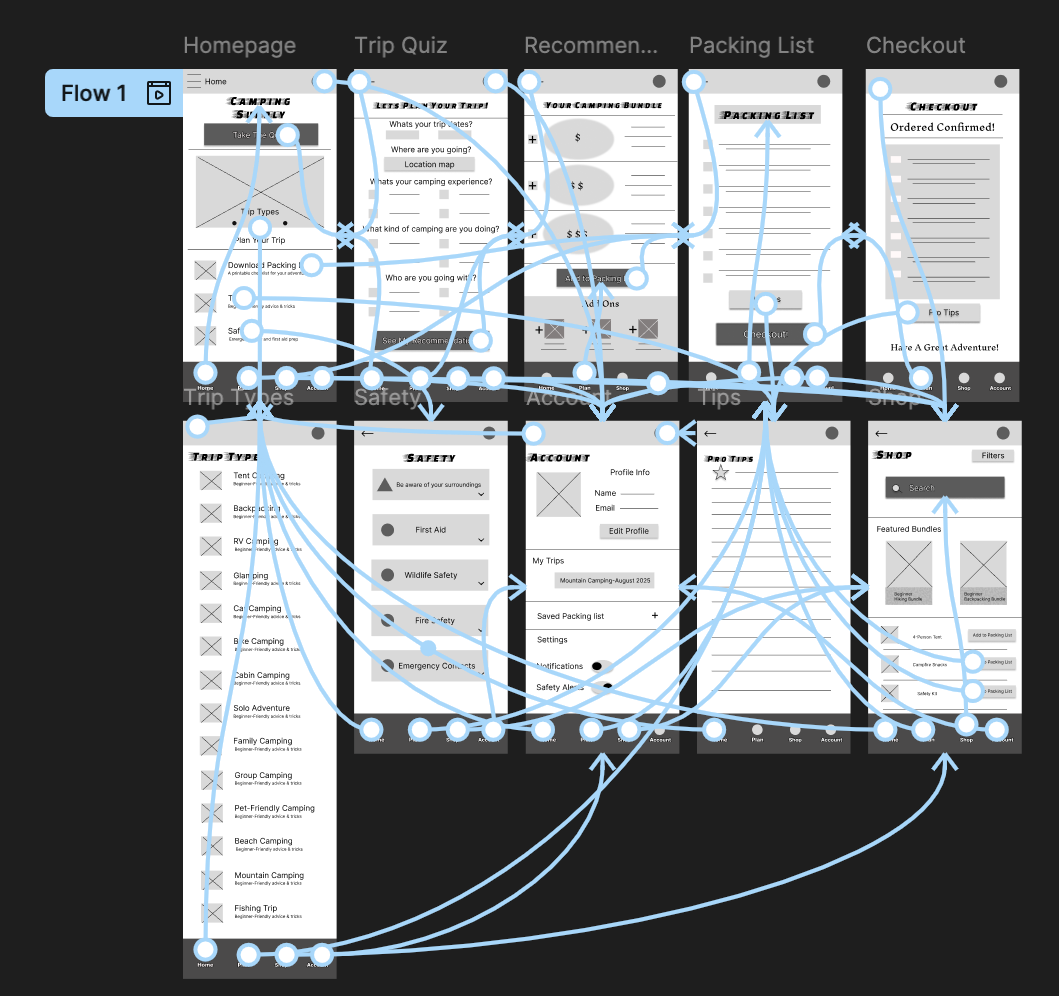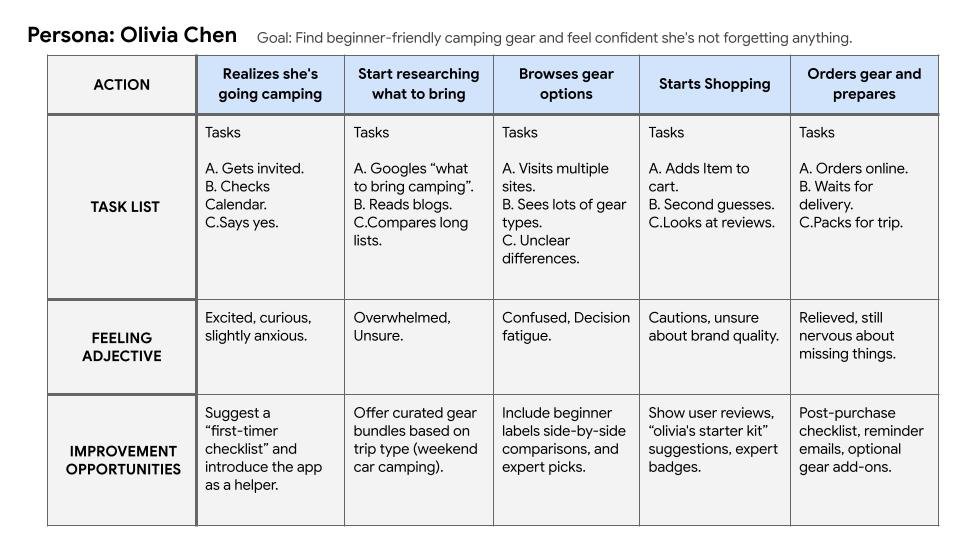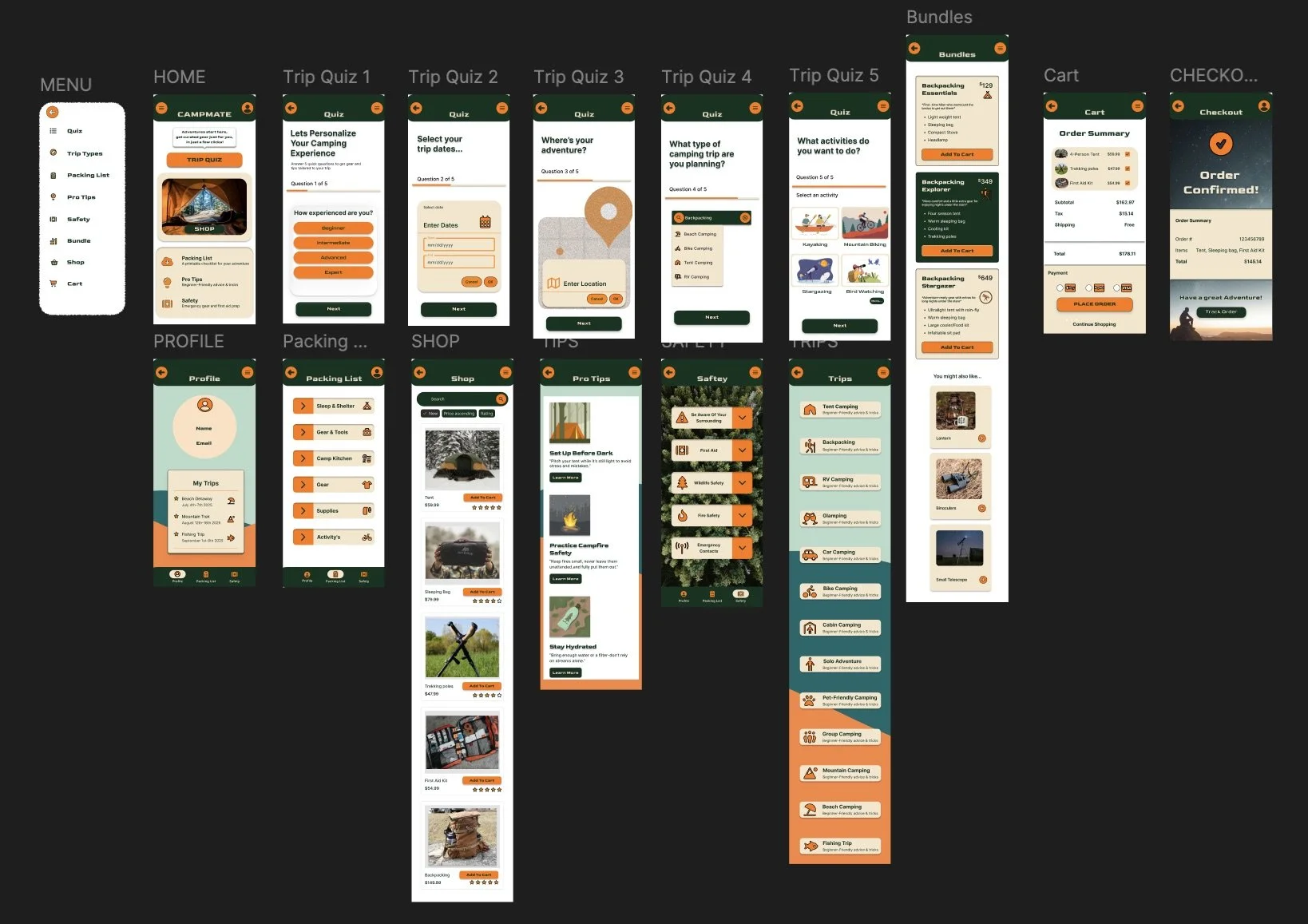CampMate
A camping supply app for beginner campers
Usability Study #1
CampMate is a mobile app that helps beginner campers plan trips, create packing lists, and find curated gear recommendations. Designed during the Google UX Design Certificate program, this project focused on improving accessibility, clarity, and confidence for new campers.
Research & Planning
Overview
Before refining the CampMate protype, I conducted an initial UX research study to understand how beginner campers browse, plan, and shop for camping gear online. The goal was to uncover major usability challenges, identify opportunities for improvement, and guide future iterations of the design.
Project Background
Many beginner campers struggle to find trustworthy gear and clear trip-planning guidance. Exisitng outdoor shopping platforms are often cluttered, intimidating, or focused on experienced users.
This study explored how beginner campers navigate a responsive camping supply prototype to identify which features improve confidence and ease of use. Insights from this phase informed critical updates to navigation flow, product recommendations, and trip-planning tools before advancing to high-fidelity testing.
Research Goals
This study focused on evaluating both usability and emotional engagement:
Determine how easily users can find and select camping gear.
Identify pain points in the trip-planning and packing list process.
Discover what features camper expect when browsing or purchasing gear.
Understand user perceptions of the app’s visual design and tone.
Observe that natural steps users take when preparing for a coming trip.
Research Questions
How easily can beginner campers navigate the prototype to find camping gear?
What challenges do users face when planning a camping trip?
What features do users expect when viewing gear or creating a packing list?
How do users feel about the visual design and tone?
What steps do users take when building a trip plan?
Key Performance Indicators (KPIs)
Time on task: How Long it takes to find and add a tent or complete a packing list.
Error rate: Frequency of misclicks or missed buttons.
Drop-off rate: Whether users abandon the process before finishing a task.
System Usability Scale (SUS): Quantitative post-test measure of overall usability.
Methodology
This was a remote, moderated usability test with five beginner campers aged 20-50. Each participant completed three main tasks while thinking alout:
Find and purchase a tent for a weekend trip.
Create a packing list using the app’s tools
Explore trip types and choose one of interest.
Sessions lasted 10-20 minutes, using a figma prototype. Afterward, participants completed a System Usability Scale (SUS) survey and answered open-ended reflection questions.
Participants
5 beginner campes with limited online shopping experience.
Ages: 20-50, U.S-based.
included one participant with a visual or cognitive accessibility need.
Recruited through friends, classmates, and online forums.
Participants received a 10$ digital gift card or raffle entry as an incentive.
Script Highlights
Participants were introduced to the prototype with reassurance that it was a test of design, not of them, and encouraged to share thoughts out loud.
Sample Tasks:
“You want to buy a tent for a weekend trip. Show me how you would find one.”
“Try creating a packing list for your trip.”
“Look at the trip types and pick one that interests you.”
Follow-up questions:
“What did you expect to see that wasn’t there?”
“How easy or difficult was that task?”
“How would you describe this app to a friend?”
Outcomes
The study revealed several usability and clarity challenges. Participants enjoyed the approachable tone and concept but expressed confusion navigating the interface, identifying clickable elements, and managing their packing list.
These findings directly informed the next design iteration - including improvements to button hierarchy, layout spacing and navigation clairy - which were later validated in Usability Study #2
Reflection
This project taught me how iterative testing and small UI refinements can make a big impact on user confidence. Futre updates will focus on accessibility improvements and expanding personalized gear features.





